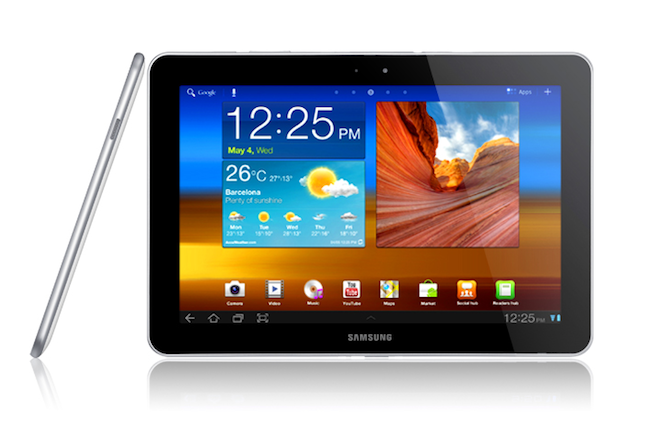
SAN JOSE, Calif. — Apple and Samsung delivered their closing statements today in a case that has been building since 2010, when Apple accused Samsung of outright copying its iPhone and iPad designs.
Apple counsel Harold McElhinny addressed the jury, saying they should look at the evidence, the “historical documents,” to find Samsung’s alleged infringement. He showed a series of Samsung’s documents that we’ve seen many times throughout the course of this case that show research the Korean company did on the iPhone. In these documents, Samsung puts the iPhone next to its own phones and makes suggestions for improvements based on features on the iPhone, such as lighting on the icons.
“There are the three big picture points,” said McElhinny during his closing statements. “Trust the documents, find the truth in the chronology, and recognize that if you are going to insist on evidence, rather than attorney argument, you heard no defense from Samsung.”
But, as if you’d expect anything else, Samsung disagrees. Samsung lawyer Charles Verhoeven (with the firm Quinn Emanuel) argued in his closing statements that Apple is simply attempting to stifle competition. He noted that all companies look at competitors, that all companies check out what other products are in the market — including Apple. He recalled an internal Apple email that said employees retrieved competitor phones, including Samsung’s for its own research.
“Apple here is asking for what it’s not entitled to,” said Verhoeven, “Consumers deserve a choice. Sure, Apple has great products. We don’t deny that. But consumers deserve a choice between a lot of great products. Competition is what built this country.”
According to Apple, however, Samsung saw a product that was taking off and wanted in on. McElhinny noted that Steve Jobs started the work on the iPhone in 2003, and when it officially launched, it received a huge amount of press. Indeed, he brought up another Samsung research document that said only six months after its debut, the iPhone raked in over 11,000 print articles and over 69 million search results on Google.
The iPhone was undoubtedly famous, and Samsung couldn’t ignore it.
“They knew a good thing when they saw it,” said McElhinny. “They tried to compete with it, and when they couldn’t, they copied it.”
McElhinny also discussed trade dress, or the nonfunctional, completely design elements of the smartphone. Apple argues that Samsung’s products look so much like the iPhone that consumers could be confused into thinking Samsung’s advertising is Apple’s, or even go so far as to purchase a Samsung product thinking it was Apple’s.
“Is anyone really deceived by Samsung devices? Consumers make choices, not mistakes,” rebutted Verhoeven.
In order to prove his point, he turned on the Samsung Galaxy Tab 10.1, which Apple filed an injunction against at the beginning of this trial. He turned it on to show a Samsung boot-up screen, an ad for Verizon, and finally the home screen. It’s important to note that Apple does not believe the home screen infringes on its patents, but rather the app display screen does. In order to get to this screen, the customer must first find the button for it, which lives at the upper right hand of the home screen.
This is a full four steps before the consumer gets to the “confusing” screen.
You have to assume here, however, that the consumer isn’t already confused by the exterior of the device, and that the phone is not set to the app screen, which it often is in retail stores.
He then asked the jury to imagine a Best Buy store. He explained that the television department used to look different when TVs still had buttons and were not flat screens. Now, however, the TV aisle is filled with products that look all the same. He took on the mantra “form follows function,” arguing that televisions all started looking alike to accommodate for remote controls and flat screens.
Verhoeven then mentioned RIM’s Blackberry and the success of the QWERTY keyboard. Following the release of the Blackberry, many phones adopted the full keyboard, making it easier to type out email. He says the same is happening with the touchscreen and that, because “form follows function,” the smartphone aisle at Best Buy is bound to look homogenous as well.
Apple ended its closing remarks asking for the jury to consider damages of $2.5 billion, the assumed profit Samsung made off of the phones, if they find the accused products infringing. Samsung claims Apple did not take into account operational costs that Samsung put into those phones, and that it actually owes Apple just $22 million. In addition, a Samsung countersuit claims that Apple infringed some of Samsung’s patents, and that Apple owes it $422 million.
Image via Samsung

